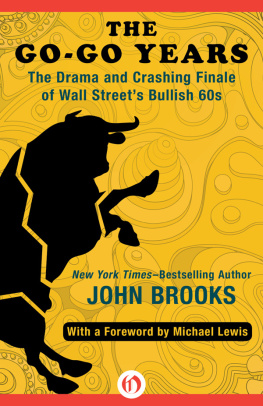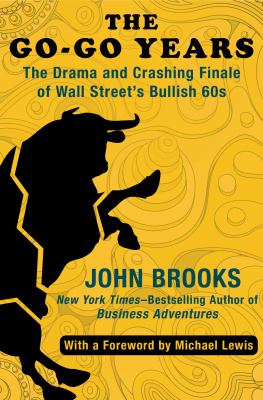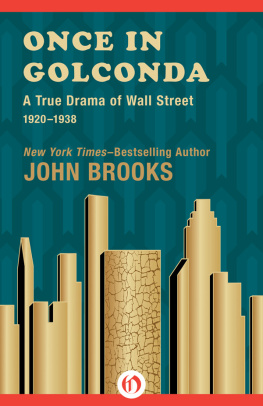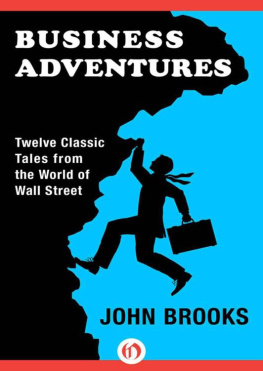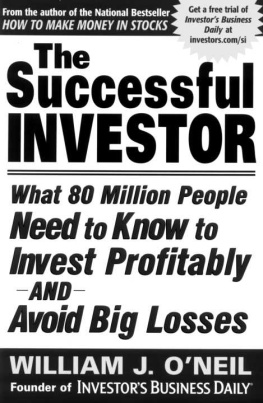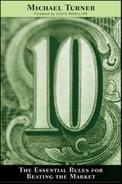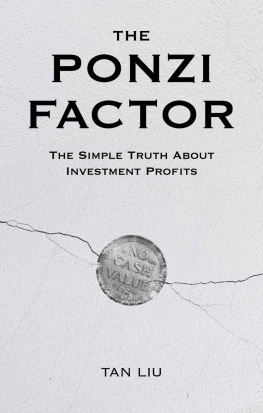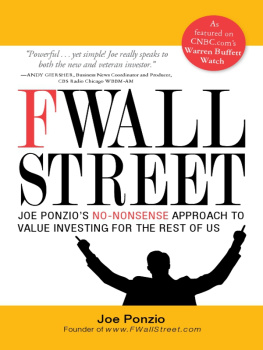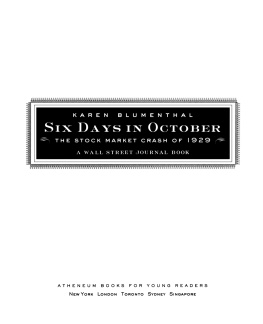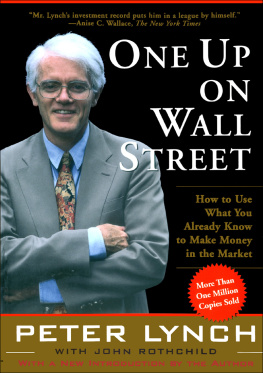The Go-Go Years
The Drama and Crashing Finale of Wall Streets Bullish 60s
John Brooks

Foreword
This may be, conceivably, one of the last books to be written about Wall Street in its own time. Thus John Brooks concludes his famous portrait of Wall Street in the 1960s. Well, we all know what happened to that prediction. Books about Wall Street in its own time went forth and multiplied. You could fill a small library with the books about Wall Street that have been published since The Go-Go Years first appeared in 1973. In the past few years alone I have seen manuscripts, or outlines, or proposals, for books about Goldman Sachs, Morgan Stanley, Merrill Lynch, Bear Stearns, George Soros, Michael Steinhardt, and Michael Milkin. These days, no book about money is considered too trivial, or ill conceived, to publish.
Brooks himself is partly to blame for this state of affairs. He was one of the first journalists to prove that an outsider could walk into Wall Street and emerge with a long and detailed story that a generally educated but specifically ignorant outsider could read with pleasure. The Go-Go Years is such a story.
The tendency with books about Wall Street is to put them down with a reassuring sigh and say, the more things change, the more they stay the same. (Or as Brooks would no doubt put it to his old New Yorker audience, plus a change, plus a la mme chose.) This book contains plenty in it to justify that response. As the stock market chart races to the roof, a cast of characters familiar to observers of the financial 1990s takes the stage. In 1960s Fidelity-mutual-fund-guru Gerald Tsai there are echoes of 1990s Fidelity-mutual-fund-guru Jeff Vinik. In the detached aloofness of the original hedge fund manager, A. W. Jones, there is at least a trace of the detached aloofness of his successor, George Soros. In the money grubbing of 1960s Market Man there is an echo of the money grubbing of the 1990s Market Man. In America, writes Brooks, with its deeply imprinted business ethic, no inherent stabilizer, moral or practical, is sufficiently strong in and of itself to support the turning away of new business when competitors are taking it in. As a people we would rather face chaos making potsfull of short term money than maintain order and sanity by profiting less.
But what is mainly interesting today for readers of John Brooks is how different the market of the 1990s feels from the market of the 1960s. There is no real equivalent in Brookss account to the technology stocks of today, for instance. There are no foreign markets, no bonds, almost no computers. On the other hand, all those Great White Institutions that these days barely merit a mention in todays books on Wall Streetthe SEC, the NYSE, the Establishmentloom large in Brookss account.
Then there is the moral of the story, or stories. The Go-Go Years reduces fairly neatly to a series of morality tales about the most outlandish events of the 1960s: Ross Perot dropping $450 million in one day; Saul Steinberg having the nerve to considermuch less to attempta takeover of Chemical Bank; Eddie Gilbert seducing some rich people into investing in his ill-starred ventures before vanishing into Brazil with the other stock market losers. How tame they now all seem! At least to this reader they have lost their ability to shock. The author clearly considers his subjects engaged in an endless cycle of falls and redemptions. But the modern reader is constantly having to remind himself who has fallen, and why he needs to be redeemed. These are moralist tales in which the moral has at least in part been lost.
This may help to explain the most curious thing about The Go-Go Years: its tone of voice. Those lovely, long, multipartite sentences, the glorious arch of the authorial eyebrow, Brookss palpable feeling that you, gentle reader, are a broadly educated person who instinctively disapproves of these speculators. Brookss voice is, above all, the voice of the Old Establishment. The reader Brooks imagines himself to be speaking to is the same shockable character who has vanished from the financial world over the past thirty years. Who on Wall Street these days thinks twice about speculation? Who disapproves of large corporate takeovers? No such person exists, or if he does hes living on some island so remote that no word of the market will ever reach him.
In the end, The Go-Go Years is not to be read in the usual manner of Wall Street classics. You do not read this book to see our present situations reenacted in the past, with only the names changed. You read it because it is a wonderful description of the way things were in a different time and place. If Brookss sense that the end of the Old Establishment would mean the end of Wall Street led him occasionally to get things wrong, at least he got them wrong in an interesting way. Wall Street as a social context is apparently doomed not by reform but by mechanization, he wrote toward the end of the book. Already in the early nineteen seventies, a significant proportion of stock trading is being conducted not face to face on the floor under a skylight but between men sitting in front of closed circuit television screens in offices hundreds or thousands of miles apart. Wall Street (is heading) toward transforming itself into an impersonal national slot machinepresumably fairer to the investor but of much less interest as a microcosm of America.
The description was dead-on, but the forecast could not have been more wrong. In a mere twenty-five years, Wall Street has become the largest microcosm on earth.
M ICHAEL L EWIS
Contents
Michael Lewis
The Day Henry Ross Perot Lost $450 Million
The Year the Amex Delisted the Old Guard Romans
Recessional for Edward M. Gilbert
Early Warnings Along Wall Street
Early Warnings Along Bay Street
The Rise of a Proper Chinese Bostonian
Corporate Chutzpah and Creative Accounting
Drugs, Fails, and Chaos Among the Clerks
The View from Trinity Church
Steinberg/Leasco vs. Renchard/Chemical Bank
The Time of the Great Garbage Market
To the Edge of the Abyss
The Invisible Samaritans of Wall Street
CHAPTER I
Climax
On April 22, 1970, Henry Ross Perot of Dallas, Texas, one of the half-dozen richest men in the United States, was so new to wealth, at forty, that he was not listed in Poors Register and had just appeared for the first time in Whos Who in America. Only a small fraction of his fellow countrymen had ever heard of him. Many who had met him by happening to sit next to him on airliners had not found him particularly impressive or interesting. Barely five and a half feet tall, with a nave, straightforward gaze, an unamused smile, a crooked nose, a hillbilly East Texas accent, and a short crewcut tended like a tennis lawn, he was inclined to talk at length and with enthusiasm about things like patriotism and the Boy Scouts of America. More than anything else, he seemed to be a nice, promising young man who was probably selling something.
Yet that day Perot made a landmark in the financial history of the United States and perhaps of the Western world. It was hardly a landmark to be envied, but it was certainly one to be remembered. That day, he suffered a paper stock-market loss of about $450 million. He still had, on paper, almost a billion dollars left afterward, but that wasnt the point. The point was that his one-day loss amounted to more than the total assets of any charitable foundation in the country after the top five; more than the annual welfare budget of any city except New York; and morenot just in figures, but in actual purchasing powerthan J. Pierpont Morgan was known to be worth at the time of his death in 1913. It was also quite possibly more in actual purchasing power than any man had ever lost in a single day since the Industrial Revolution brought large private accumulations of money into being.

